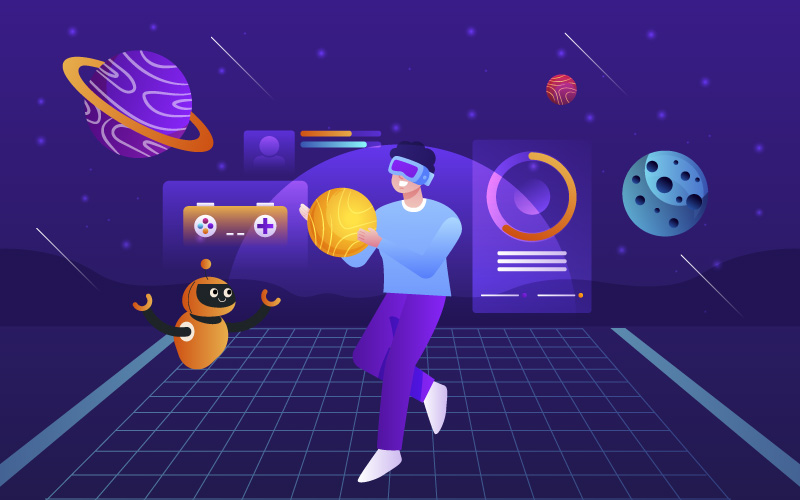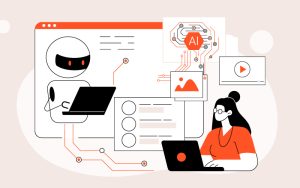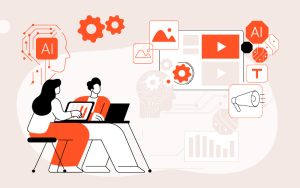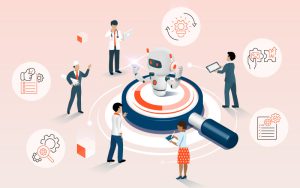Adaptive learning and gamification have become two powerful forces in education and corporate L&D. When paired with the growing capabilities of artificial intelligence, they offer something unique learning experience that adjusts in real time to the learner’s needs, preferences, and progress.
But here’s the challenge: translating policy documents, SOPs, or dense training manuals into structured, learner-friendly modules takes time, effort, and design thinking. This is where AI tools are beginning to quietly reshape the landscape.
Over the last year, several AI-driven services have emerged to help organizations scale up learning design without compromising on personalization or instructional quality. Among them are tools developed under trusted ecosystems such as Upside Learning and MITR Learning & Media, which are exploring how automation can coexist with strong pedagogy.
This article explores how AI fits into personalized and gamified learning environments, how automation supports instructional design, and where human expertise still makes all the difference.

The Psychology Behind Gamification and Motivation
Behavioral science is the foundation of gamification. Points, badges, levels, and awards are organized motivators that promote repetition and tap into dopamine feedback loops; they are not arbitrary tricks.
Game mechanics may help learning, seem more like progress and less like a chore. A well-timed badge or visual indication of progress may significantly increase learner engagement, especially when paired with adaptive pathways that adjust the learning path based on prior performance.
Upside Learning has long championed this approach with its scenario-based learning solutions, where learners actively make decisions, see consequences, and learn through exploration.

How AI is Reframing Personalized Learning
AI brings precision to personalization. Machine learning models, as opposed to static branching logic or user-selected filters, are able to watch how a learner interacts, how long they spend on a topic, what kinds of questions cause them to stumble, and how they react to various forms. They may then utilize this information to modify the next step.
But creating content flexible enough for AI to work with still takes expertise. That’s where instructional design meets automation.
Imagine uploading a dense policy document and receiving a structured course draft already split into learning objectives, with supporting quizzes and summary slides. Some modern AI tools are already doing this behind the scenes. They’re not replacing instructional designers but accelerating their workflow and freeing them to focus on nuance and narrative.
One such example in use is a service that extracts learning structure from SOPs and transforms them into editable, LMS-ready modules. It’s designed for privacy, works without storing source data, and prioritizes instructional coherence. Rather than being sold as a platform, it’s used as a service quietly sitting behind high-quality learning delivery.

Where AI Fits Within Gamified Course Creation
Now here’s where it gets interesting. Adaptive gamification needs both structure and flexibility. AI can help generate foundational structure, objectives, assessments, and content flow. Human designers then decide how to bring in motivational elements.
For instance:
-
A quiz becomes a challenge round
-
Feedback becomes progress indicators
-
A decision-tree case study becomes a scenario-based mission
Teams at MITR and Upside Learning often extend these AI-generated foundations into experiential learning using proven frameworks. These might include micro-interactions, spaced retrieval, and visual storytelling all built around content that AI has already helped shape.
Microlearning & Nano-Courses: Why AI-Structured Content Works
Microlearning thrives when content is clean, modular, and focused. AI’s ability to deconstruct long-form material into smaller digestible pieces makes it well-suited for this model.
Imagine a policy document broken into ten 3-minute modules, each aligned with a single learning outcome. Now layer in branching scenarios or reflective questions, and you have a nano-course that works across devices and fits into a learner’s daily flow.
For reference, Upside Learning’s mobile learning solutions emphasize this type of design AI-supported, but human-refined.
A Subtle Revolution in Course Authoring
You won’t see it announced on every slide, but behind some of today’s most responsive course designs is AI quietly doing the heavy lifting: structuring outlines, drafting assessments, mapping objectives.
One AI-powered course generation service recently launched by MITR and Upside Learning used mostly by L&D teams, consultants, and compliance departments lets teams go from raw documents to publishable modules without needing to manually build every screen. It’s secure, fast, and doesn’t lock you onto a platform. Instead, it sits in the background like a smart assistant.
How organizations use it is what counts. The best outcomes occur when instructional designers intervene after AI has established the framework, adding levels of interaction, tone, and judgment that are still difficult for computers to process.
Gamification, Personalized Pathways, and the Human Touch
The most effective courses continue to concentrate on empathy despite the advancements in AI. On recognizing when to challenge, when to reward, and when to pause. Because of this, the future is not about AI against instructional design, but rather about AI and instructional design.
Consistency and originality are two advantages that learners get when organizations combine algorithm-driven structure with deliberate gamification and context-aware feedback. AI will be most helpful in this situation, not to replace people, but to provide them with better tools to work with.
Final Thought
Gamified gimmicks and gaudy technology are not the focus of the next wave of learning. It’s about balance. Systems that understand the learner without overwhelming them. Courses that feel crafted but scale like automation. Teams that are more agile rather than sloppy.
The most impactful learning experiences will be created by teams that blend automation and empathy, speed and planning, as AI-powered technologies continue to advance.
Examining what services like BrinX.ai are now quietly enabling in the background is useful if you’re interested in improving course design efficiency without compromising quality.
Because improved course production isn’t the only thing we’re witnessing. Learning teams are becoming more nimble, knowledgeable, and purposeful in their operations. The art of instructional design is being sharpened by AI, not replaced. Effective usage turns it into a quiet partner that assists you in concentrating on what counts: making education more powerful, relevant, and human. Personalized learning will be around in a few years. Silently, thoughtfully, and more quickly than most people know, it is already beginning to take shape.

FAQs
What is adaptive learning, and how does AI contribute to it?
Adaptive learning adjusts the experience to the performance, preferences, and speed of individual learner. By altering the trip based on real-time data analysis of what a learner clicks, skips, or struggles with, artificial intelligence improves this.
Can AI really generate full courses from raw content?
Yes. Certain AI-powered services can analyze SOPs, manuals, and slide decks to generate structured modules with assessments and objectives. Although they significantly cut down on production time, these drafts still benefit from human inspection.
How is gamification supported by AI?
AI doesn’t create game mechanics, but it sets the foundation. It structures learning into modules, which instructional designers can then gamify, adding points, scenarios, or progress indicators that motivate learners.
What’s the benefit of combining AI and microlearning?
Complex material is decomposed by AI into goal-aligned, modular building pieces that are ideal for microlearning. This facilitates the creation of brief, efficient, and time-spaced learning excursions that improve retention.
Is this approach scalable across a global workforce?
Yes. AI-assisted course development is particularly effective at scaling training in domains where consistency is crucial and source information is already available, such as compliance, product knowledge, and onboarding.
Do I need to buy a platform to use this kind of AI course builder?
Not always. Some services, like the one developed under MITR, offer course generation as a project-based model, no platform lock-in, no licenses, just a secure workflow and editable output.
Can human instructional designers still add value after AI builds the draft?
Absolutely. In fact, they’re essential. AI handle’s structure and speed; humans bring voice, empathy, and interactivity. It’s not either-or, it’s a partnership.
How secure is this process when using sensitive documents?
Best-in-class tools encrypt content, never store source material beyond delivery, and meet enterprise privacy standards. Always check for data handling policies before sharing internal content.

Soft Skills Deserve a Smarter Solution
Soft skills training is more than simply information. It is about influencing how individuals think, feel, and act at work, with coworkers, clients, and leaders. That requires intention, nuance, and trust.






